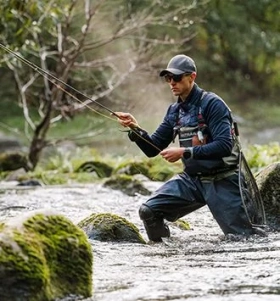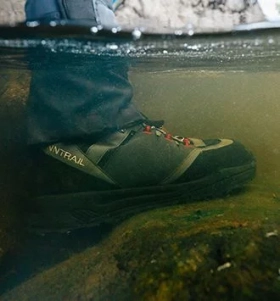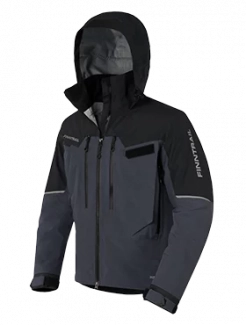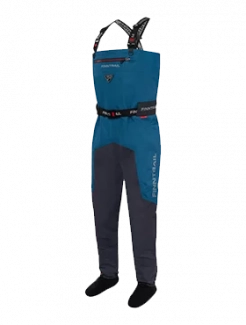How to Approach Fish When Wading to Avoid Spooking Them
Fish have evolved over millions of years to detect danger through subtle changes in their environment. Their lateral lines are finely tuned to pick up vibrations, and their vision is adapted to detect movement and contrast — especially from above.
When you enter the water, you create disturbances: you send pressure waves, stir up sediment, shift current flow, and may cast unnatural shadows. These changes often signal danger, especially in heavily fished or ultra-clear waters. Once spooked, fish retreat to cover, stop feeding, or simply vanish, making it incredibly difficult to entice a strike.
Understanding how and why fish react this way is the first step to preventing it.
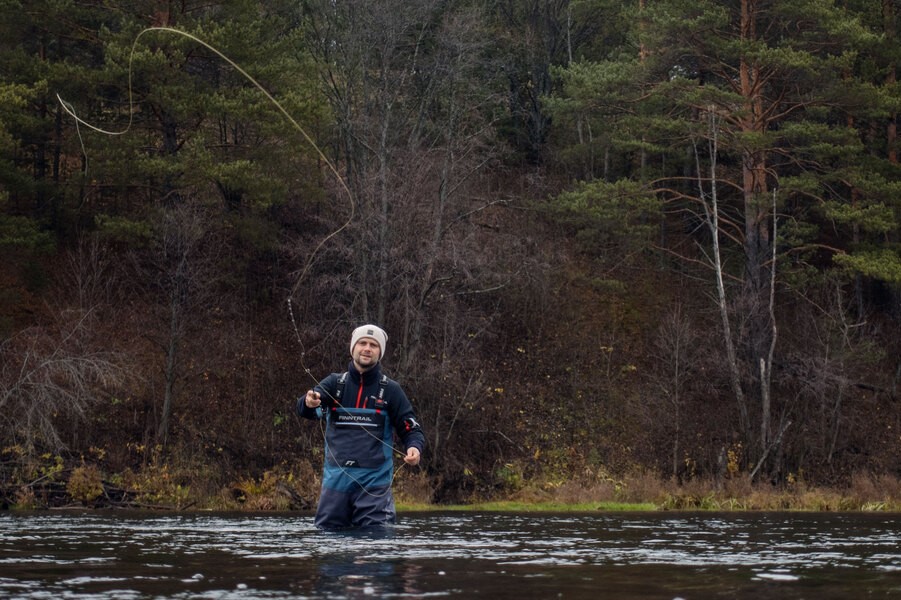
1. Start by Observing Before You Wade
Before stepping into the water, slow down and observe. Take a few minutes to scan the water from a distance. Look for subtle signs of fish activity: rising fish, nervous water, dimples, flashes beneath the surface, or aquatic insect activity.
Planning your approach from dry land is often the difference between a productive day and a frustrating one. By observing first, you get a mental map of where fish are likely to be, which helps you avoid blindly blundering into prime lies and scaring fish away.
2. Enter the Water Slowly and Quietly
When it’s time to wade, do it with care. Step into the water slowly — without splashes, stomps, or sudden jerks. This not only avoids spooking fish but also reduces your risk of slipping or losing footing.
Technique Tip: Walk heel-to-toe, and slide your feet along the bottom instead of picking them up and putting them down with each step. This reduces both noise and sediment disturbance. Fish notice changes in clarity, so kicking up a cloud of silt can quickly send them fleeing.
Take your time. Being slow and deliberate is almost always more effective than rushing in.
3. Mind the Current and Your Position
Fish typically face upstream to feed on insects drifting down in the current. That means they’ll spot anything moving toward them from downstream — especially a tall, upright figure wading through the water.
Whenever possible, approach from behind or at a diagonal angle. Stay downstream and approach fish from the tail end or side, keeping a low profile.
Use any available cover — like boulders, overhanging vegetation, or bank contours — to hide your movement. Even crouching slightly can break your silhouette and keep you off a fish’s radar.
4. Watch Your Shadow and Reflection
A bright sunny day might feel perfect to you, but it can make you more visible to fish. One of the most overlooked mistakes is casting your shadow over the water. Your shadow can precede your physical presence by several feet and give fish ample warning.
Try to keep the sun in your face or to the side, especially when approaching promising spots. Adjust your approach angle to avoid letting your shadow drift across feeding lanes or holding lies.
Calm, still water can also reflect your movements. In mirror-smooth pools, a sudden motion or the flicker of your arm can create a reflection that fish interpret as danger.
5. Wear Stealthy Clothing and Gear
While it might seem minor, your choice of clothing and gear can make a noticeable difference. Opt for natural, subdued tones — earthy greens, browns, and grays that blend into the streamside environment.
Gear Consideration: Polarized sunglasses are indispensable. They reduce surface glare, allowing you to spot fish, structure, and current seams. But they also help you stay calm and calculated — minimizing sudden moves caused by unexpected obstacles.
Footwear matters too. Felt-soled boots or rubber soles with a good grip not only give you better traction but also reduce the noise created by clunky footsteps or hard plastic surfaces hitting rocks.
6. Time Your Movements With the Environment
Take advantage of nature’s cover. If there’s wind, fast water, or nearby rapids, use those sounds to mask your own movements. Move when the environment is loud and pause when it’s quiet.
Low-light conditions — early morning, evening, or overcast days — can also help you get closer without being seen. Fish feel safer during these times and are more likely to feed actively, even in areas they’d normally avoid during full sun.
Using the natural rhythm of the river to conceal your approach can dramatically improve your stealth game.
7. Don’t Overstay in One Spot
Even if you’re being quiet, lingering too long in one area can disrupt the fish. Your presence alters the microcurrents, stirs the sediment, and can create subtle but continuous pressure. If the action slows or fish start disappearing, consider whether you are the reason.
Rotate through different spots and give areas time to rest. Fish will often return to prime lies if left undisturbed for a short while.
8. Learn From Your Mistakes
Spooking fish isn’t always avoidable, especially when learning. But every blown opportunity is a chance to get better. Pay attention: Did the fish bolt after a heavy step? A misplaced cast? A shadow? These details offer clues on how to improve your stealth.
Keep a mental (or written) log of what worked and what didn’t. Over time, you’ll develop a feel for how close you can get, what approach angles work best, and how fish react under different conditions.
Final Thoughts
Effective wading is as much a part of fishing as casting or choosing the right fly. In clear water, wary fish are constantly on high alert. Subtlety becomes your most powerful tool. By mastering the art of stealthy wading, you transform yourself from a disruptive presence into just another part of the river.
So the next time you gear up, don’t just think like an angler — think like a hunter. Move with purpose. Stay low. Blend in. The river will reward you with opportunities that only the most mindful waders ever experience.




